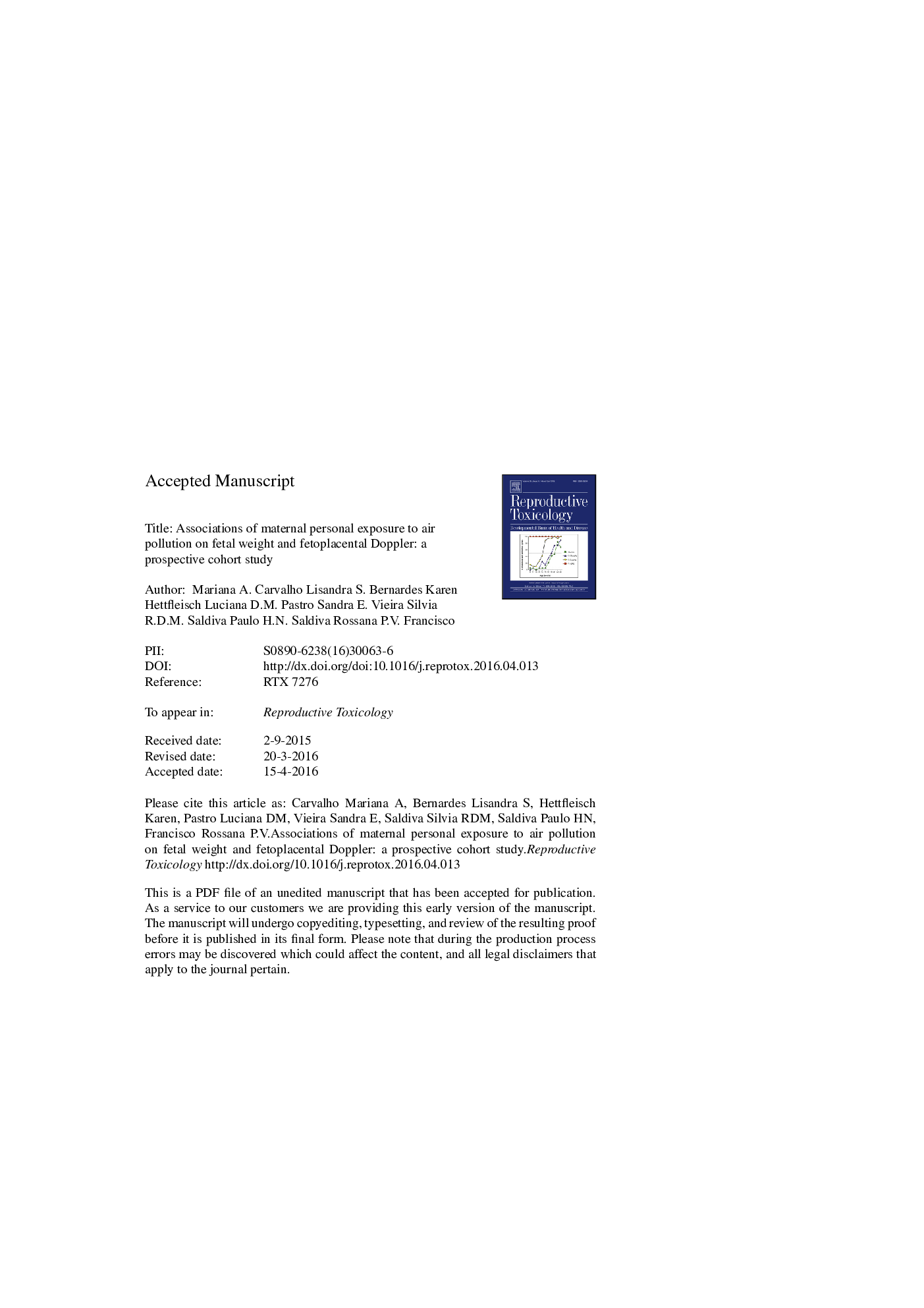| Article ID | Journal | Published Year | Pages | File Type |
|---|---|---|---|---|
| 5858013 | Reproductive Toxicology | 2016 | 44 Pages |
Abstract
We determined the influence of maternal air pollution exposure during each trimester of pregnancy on fetal and birth weight and fetoplacental hemodynamics. In total, 366 women with singleton pregnancies were prospectively followed in the city of São Paulo, Brazil. Nitrogen dioxide (NO2) and ozone (O3) were measured during each trimester using passive personal samplers. We evaluated fetal weight and Doppler velocimetry data from the umbilical, middle cerebral, and uterine arteries in the 3rd trimester, and birth weight. Multivariate analysis was performed, controlling for known determinants of fetal weight. Exposure to higher levels of O3 during the 2nd trimester was associated with higher umbilical artery pulsatility indices (PIs) [p = 0.013; beta = 0.017: standard error (SE) = 0.007]. Exposure to higher levels of O3 during the 3rd trimester was associated with lower umbilical artery PIs (p = 0.011; beta = â0.021; SE = 0.008). Our results suggest that in the environment of São Paulo, O3 may affects placental vascular resistance.
Keywords
Related Topics
Life Sciences
Environmental Science
Health, Toxicology and Mutagenesis
Authors
Mariana A. Carvalho, Lisandra S. Bernardes, Karen Hettfleisch, Luciana D.M. Pastro, Sandra E. Vieira, Silvia R.D.M. Saldiva, Paulo H.N. Saldiva, Rossana P.V. Francisco,
